Media | Articles
The Capri was slightly Allanté, somewhat Miata, and an entirely misguided Mercury
Platform sharing has been going on since the days of the Model T, which spawned everything from minimalist Runabouts to formal Doctor’s Coupes, but Ford really upped the ante by the early 1990s. You may remember one particularly impressive feat of late-’80s platform cross pollution pollination: the Cadillac Allanté, a custom-bodied E-body Eldorado that literally flew in from Italy to be assembled in America.
Luxury vibe and high-stakes budgets aside, I wager Ford’s gambit on affordable, top-down motoring was even more of an M.C. Escher–worthy supply chain. Only FoMoCo could cut up a Mazda family car, seek stylistic inspiration from two Italian design studios, source greasy bits from Mazda’s high-performance portfolio, apply the (then passé) name of Europe’s answer to the Mustang, assemble the whole lot in Victoria, Australia, and retail the resulting vehicle at dealerships still reeling from the ill-fated Merkur brand.
Boy, that’s a lot to process. With an origin story that complicated, how could the Mercury Capri not earn a spot of real estate in our hearts? There’s one big reason—but we’re getting ahead of ourselves.
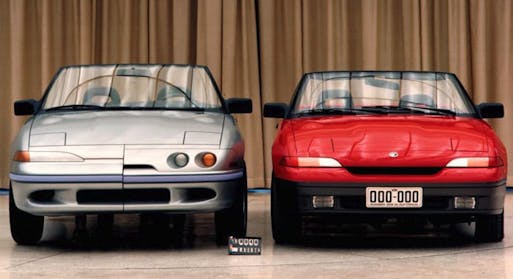
In theory, the Capri had the chops to make it work. Wait, hear me out on this.
Like the cosmopolitan Allanté, the Capri eschewed in-house notions from Ford designers for a final exterior penned by Carrozzeria Ghia. While Italdesign lost the bid for the body, its handiwork is present in the Capri’s minimalist yet purposeful interior. While the somewhat sleek skin may not have the proper proportioning of the rear-wheel-drive, low-slung, and long-hooded Miata, the Mazda 323–based platform has a fair bit of cred thanks to Mazda’s admirable efforts in Group A rally racing. There was even a turbocharged engine (XR2 model) with a mandatory manual transmission, a combination unavailable in the Miata.
Marketplace
Buy and sell classics with confidence
The Capri was unlike its competition, and that evaluation doesn’t necessarily damn it with faint praise. That’s because the Capri was far more practical than a mere two-seat sports car. Even better, the rear seat—useless as it may be for grown humans—sported a hard-sided back, which folded to accomodate a significant amount of cargo, should the top remain up to allow full access to the trunk. The Capri’s standard tonneau cover topped the Miata’s exposed affair, while an optional hard-top secured four-season fun. There was even an optional, speedster-like cabin-cover so Capri owners can play Porsche Speedster in foul weather. You know, weather that’s ideally suited to wrong-wheel-drive propulsion.
But what made the Capri stand out was the aforementioned huffer, feeding extra air to the Mazda-sourced, 1.6-liter mill. The DNA is similar to what’s found in the Mazda 323 GTX, sans the all-wheel-drive drivetrain. A tragedy, but all automotive efforts inspire a cult-like following. Well, eventually. And the Capri XR2 deserves the following it has garnered, even becoming a credible threat in 24 Hours of Lemons races. Well, at least when the events are staffed with Spec Miata racers and seasoned B-series engine builders. Here’s a telling quote from one of the race Capri’s caretakers:
What can I say? After changing literally everything in the suspension and upping the boost to unimaginable levels, it’s the front-wheel drive Miata fighter it was always destined to be. –Zachary Fox
My bias is clear, but Mostly Harmless Racing and their #42 Capri XR2 shows us this ragtop had more potential than we knew.
So feel free to consider a modified Capri XR2 as a legitimate threat to a Miata, provided there are enough straights to let the turbo really sing. Who knows, maybe there are enough people willing to embrace the benefit and put Mercury on their list. No matter, the folks at Motorweek got their hands on a 1994 Mercury Capri XR2 as a swan-song review for this star-crossed captive import of Japanese, Italian, German, Australian, and American heritage.
The revised front/rear bumpers and bolder rear spoiler weren’t fooling anyone, but the 0-to-60 sprint of 8.0 seconds clearly meant the visually louder tail lights were all a 1.6-liter Miata would ever see at a stop-light grand prix. The 16.1-second quarter-mile time was also superior, and a strong 88-mph trap speed suggested the Miata had better make some headway in preparation of a racetrack’s wide-open straight before the checkered flag.
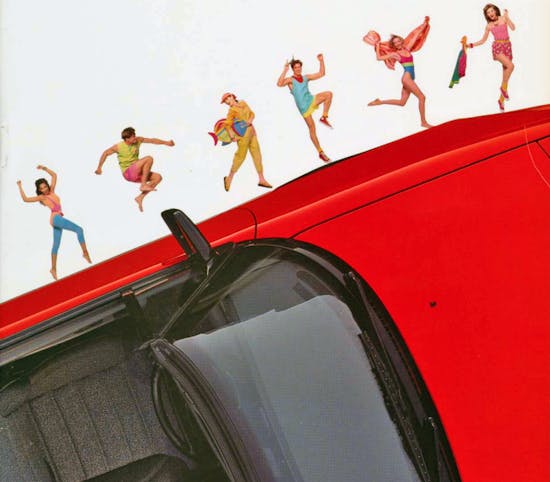
Turbo torque is irrelevant for most North American buyers of Lincoln-Mercury’s little droptop, but the $13,190 asking price ($14,900 for the turbocharged XR2) made Motorweek lament the passing of the cheapest example of the breed on the market. But I doubt there were many sleepless nights or tear-soaked cheeks upon the Capri’s passing, and its singular party trick was rendered pointless by the 1994 introduction of the 1.8-liter Miata. There could only be one winner, and it was clearly the product of thoroughbred Mazda engineering and pureblood roadster design.
In the end, the Capri’s strengths were also its downfalls. The price was right, but even with a turbo, nothing could stop the Miata’s righteous march to the hallowed halls of sports car perfection. Who knows, maybe all the billable hours Mazda charged to Ford for its effort actually subsidized the Miata’s R&D costs? Ford musta written Mazda a fat check for the privilege, but they forgot one cardinal rule in the car business: The answer is always Miata.
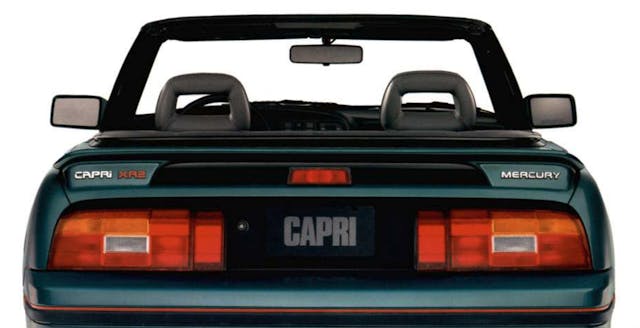









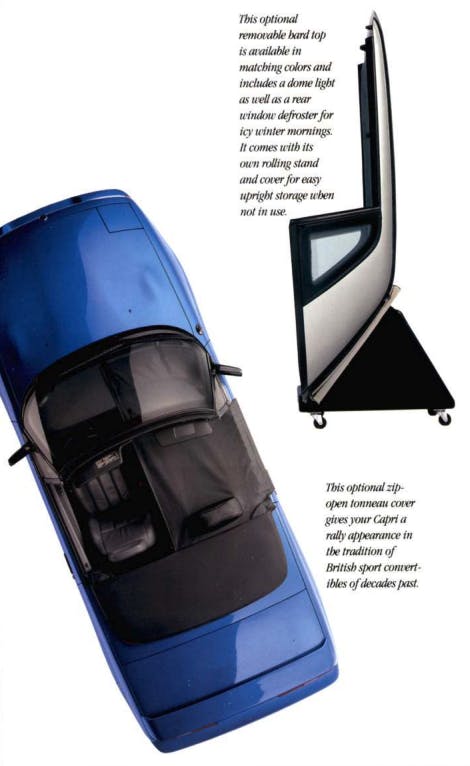
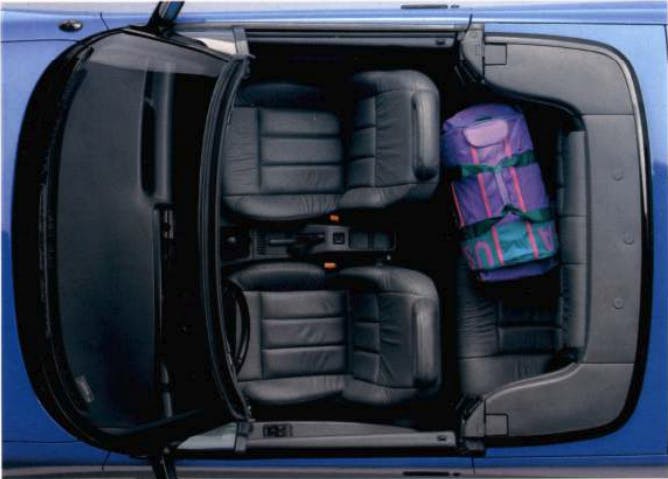
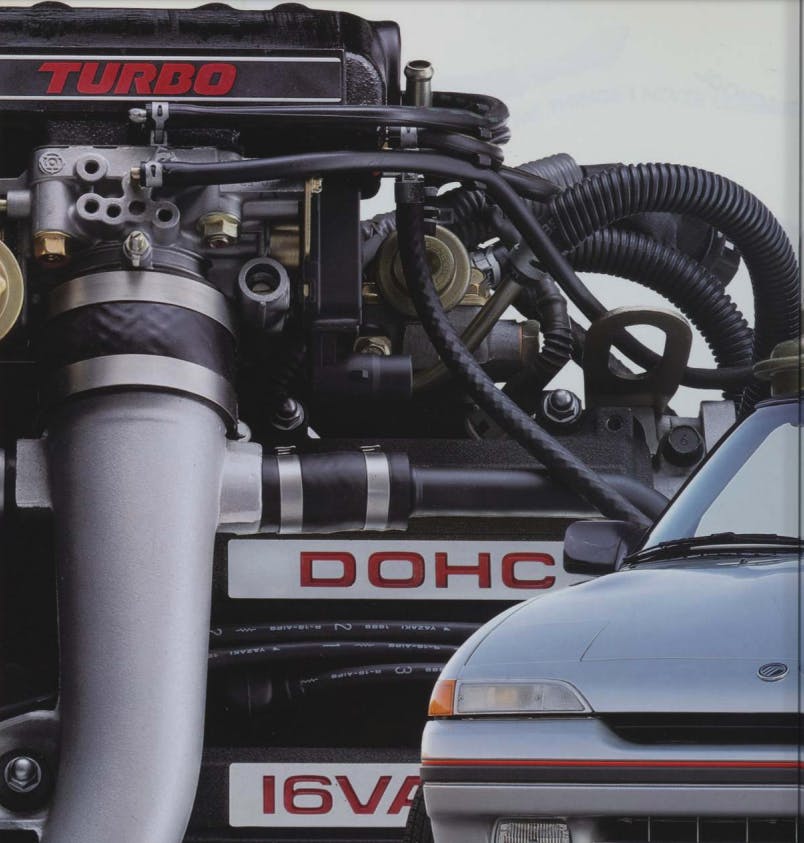
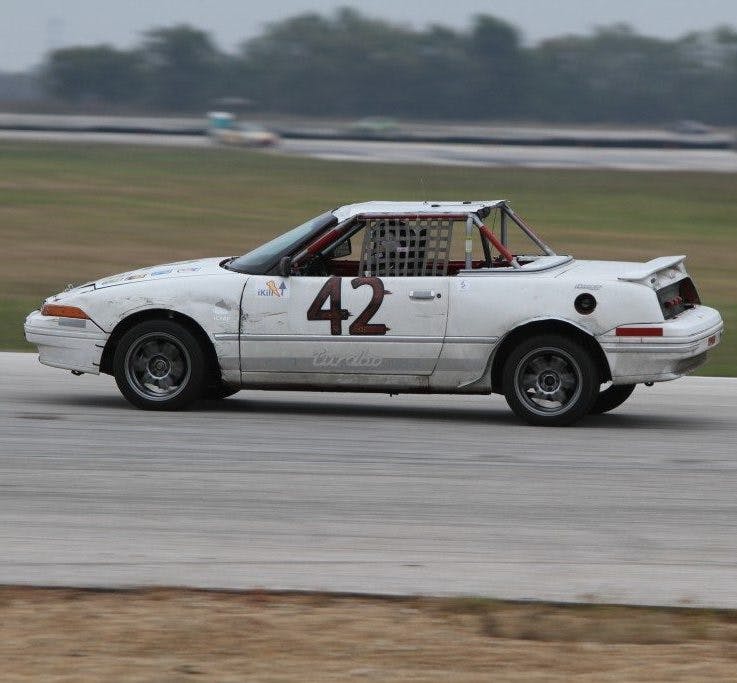









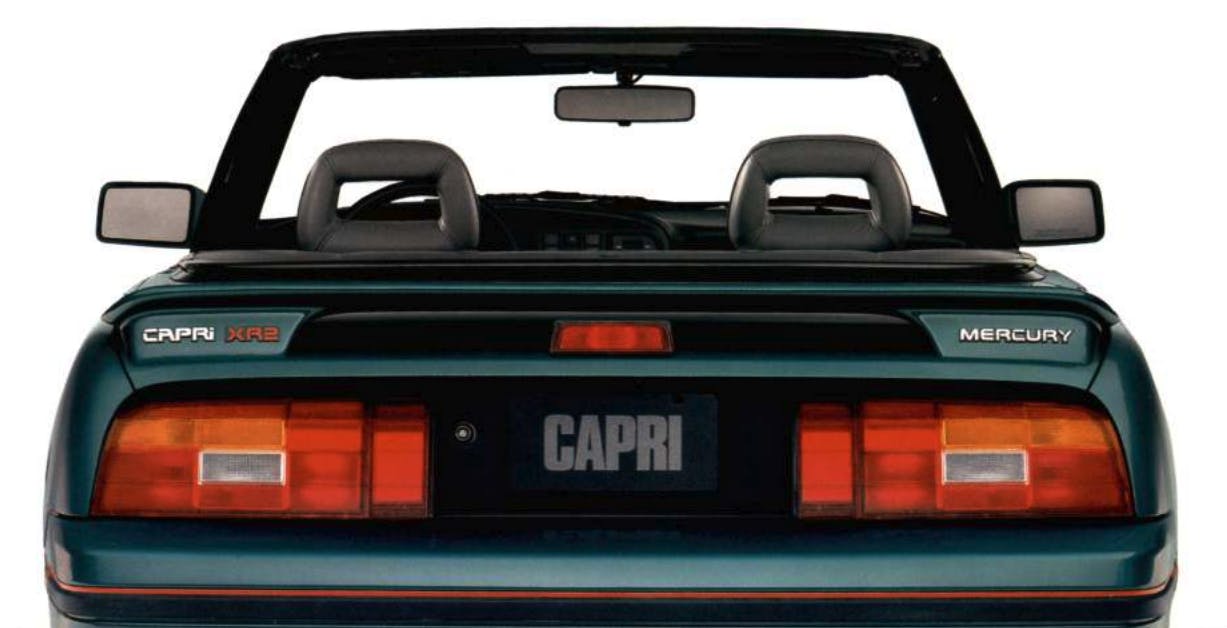
We sold these cars new and they were awful . Did you forget the part about the quality was so bad LM had to send many boatloads back to Australia to be “ fixed” ? We were also a Mazda dealer so the comparison was painfully obvious .
I never really looked at this car before, I liked the Miata, but i also liked the first gen Capri, from the 70s, my uncle had a 74, she was quick, with stick, if I recall it was a 6 Cylinder, that’s the Capri I loved
I owned a red XR2 for over a decade, first as a daily driver then it became just a weekend car. Tons of fun for a great price. My daughter rode in a car seat in the back for several of those years, then moved up to the passenger seat. This was the car my son first drove after getting his driver’s license. I really loved that car
The last Capri just wasn’t a pretty car — not ugly, just boring. Pretty boring styling doomed it more than anything else, IMHO.
The revival of the Capri, and I term it a revival, because the 1978 and prior Capris were imported from Germany as many of you will recall. I owned one of these fun little rear wheel drive coupes. And yes, they weren’t perfect, but they were fun to drive. Then possibly in a cost saving exercise, Ford decided with the 1979 model to put it on the Fox Platform along with the Mustang. This instantly relegated to an also ran category, especially when competing with an iconic nameplate like Mustang. The wisdom and success of Cougar/Mustang brotherhood formula can and will be debated.
But the Capri came to us initially as what it was, and the return to this ideal wasn’t quite met in the way it could have or should have been. Maybe with the Fox interruption, the connection from the first gen to the third gen was made even more confusing. Who really knows. For Mazda though, it was something fresh and new on the seen and I think that messaging came through much clearer and stronger than did the Capri.
We bought a ’90 in Summer ’89. Just sold it 6 months ago with 107K on the mile ticker. No regrets.
Replaced it with an ’08 Saab 93 Turbo Aero convertible. Love it.
Miata wins every time, and the Miata Cup Series is one of the best in the racing world.
And you can and many do drive it in the winter. I did only one winter or two then garaged the little beast during the cold season.
…as I recollect = I was workimg at Automobilr Magazine at the time…Ford showed a concept version of the Capri at the Detroit / North American Auto Show in 1989…then delays in production – the Miata comes out in the meantime,,,game over – but it still gets launched! Whoa!
Early magazine commentary showed an attractive little sports car. We were hooked. Went to the local F L M dealer to put in an order. The dealership had no idea what we were talking about. They, being big car enthusiasts (no pun intended) were not familiar with what was going on with Ford’s sports car. By the time the Capri was introduced, it had become the homely little turd. We turned our backs on it.
)
Sad to see these mostly negative comments. I loved my 2 Capri’s, both bought new. The 91 was totaled after spinning on the ice, but luckily, I walked away. The 93 lasted until 2007. I am a short woman, and it was just the right size for me. At Christmas I would put the top down and pick up the tree, bringing it home in the passenger seat.
I have a 1991 Capri with the turbo and 5 speed.Bought it about 17 years ago for $1200.The car is a hoot to drive.I was a Florida “snow bird” so I needed a “mandatory convertible “.Really have no complaints.
And for the price how could you go wrong.
I test drove one of these when they came out. I liked it and was surprised how well it handled, at least to me. I might have purchased one if I had been in the market for a new car.
Australian-built was catch-as-catch-can: one was assembled brilliantly, and another was a loosey-goosey rattle-can of bolts. I special ordered one, and when it arrived it was the badly assembled variety, and I refused the car. Quality killed this roadster. The early 90’s was a great time for small roadster choices; unfortunately my bad legs did not fit in the Miata when it came out. Bought my Honda Del Sol Si new in 1995; love it, and still own it.
Why the four-speed stick V-6 Capris didn’t get more attention then and now escapes some of us.
My first ex-wife liked these. ‘Nuff said.
We enjoyed our 1972 Capri until I totaled it with only a few thousand miles while driving on a black ice covered road in Vermont.